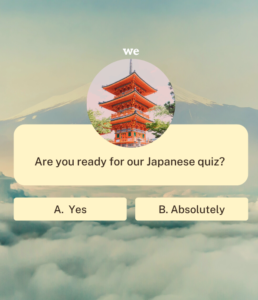Author: Alison Carter
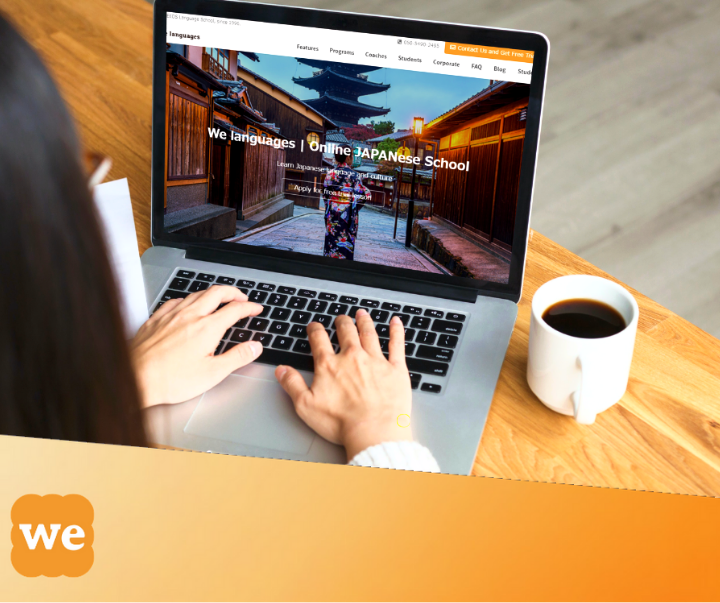
The We Languages approach to language learning is a unique and innovative one that emphasizes the importance of human expression and communication. Usually, someone enrolling in a language learning course may think the focus will be on grammar, structure, and pronunciation. Of course, these aspects are important, and without a solid foundation in them, speaking a new language will be difficult.
However, the "We approach" offers a new way to focus on and develop in your language journey. We encourage students to learn from their perspective and at their pace. This method aims to give the speaker a real voice and allow them to communicate authentically in the way they wish.
We recognize language learning is personal and specific to each individual. In fact, there is space for the student to craft (along with an experienced coach) the lessons and learning route that helps them in their life. Today we will explore the way in which We helps students find their voice in Japanese and/or English whilst viewing language learning as a tool for self-discovery and wider cultural understanding.
We Languages - Our WWW Approach
The WWW approach refers to the way lessons are structured for every student who learns English or Japanese at We. There are Warm Up, Work Up, and Wrap Up elements to each lesson, whether they are a group or personal lessons.
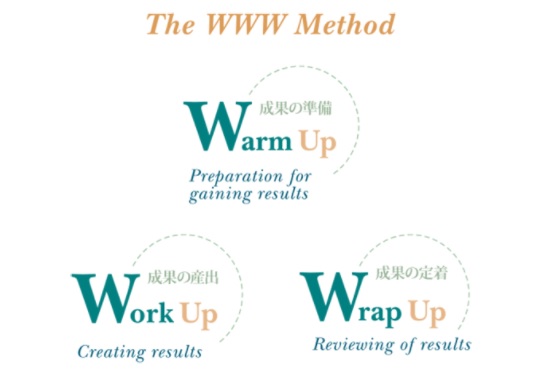
Warm Up
In the Warm Up section, the coach and student set learning goals, and of course, this is also a chance for warm greetings and friendly catch-ups. Being comfortable with the person you are learning with is very important. Therefore, this space in the lesson provides a chance for both parties to settle in for what is next. Being given ownership of your learning journey is empowering as the student and provides a space for the coach to help the learner on their own terms.
Work Up
Once the Warm Up is complete, it is in the Work Up section of the session. Here the main bulk of the learning is the opportunity for the student to get to grips with the information they are understanding that day. We believe that to get new knowledge, it is necessary to deepen one’s understanding. We can do this by showing the relevance to the students' lives within each topic studied.
For example, let's think of a student who wants to learn more about the daily conversation in Japanese. It would be important to ensure the role plays, phrases, and pair work. Or, if the student is an office worker, it could be useful for him/her to learn the business language and professional ways to phrase things. If he/she is a very sociable person it could be helpful in the Work Up to focus on informal, role plays within specific contexts such as the bar, cafe, restaurant, or gym.
As a result, The Work Up space is a place of encouragement, practice, and exploration. It helps to enable students to speak spontaneously on familiar topics. This occurs by incorporating the language and cultural-based information they have learned so far.
Wrap Up
Finally, the lesson rounds up with the Wrap-Up section. Here you can review what you have learned within that session. The coach will offer affirmations of praise to the student for their efforts.
It is interesting to note here that scientifically it has been proven that when we review and repeat the things we learn (either in a written form or a verbal form), the brain is more able to fully comprehend them, as this study from the University of Waterloo illustrates.
What Is The Production Effect?
By repeating learning out loud, information is more able to get into long-term memory. This method of learning also boosts neural plasticity and enables the brain to create neural pathways that strengthen the understanding and comprehension of whatever is focused on and repeated. This ‘production effect’ shows that speaking and hearing oneself has the best impact on your memory and knowledge retention.
Once this reinforcement and knowledge retention process has been undertaken in a language lesson, the Wrap-Up section is complete. There may then be homework tasks given and a discussion about the focus of the next lesson.
Although there is a lot of freedom and individual customization within what is taught, the We specific WWW structure ensures it solidifies and reinforces learning every step of the way.
Metrix - placing the student at the centre
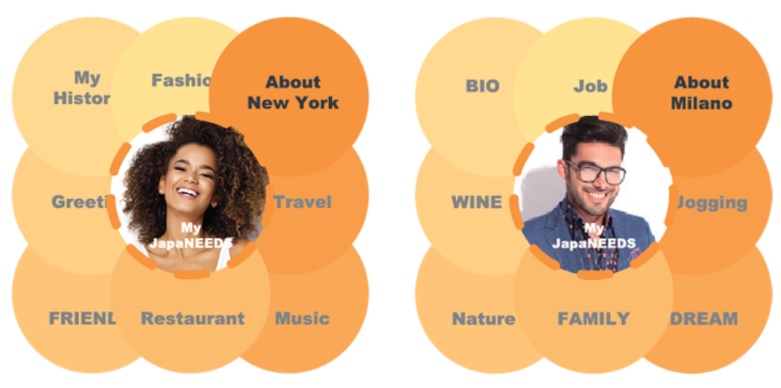
Another way in which We offers a beneficial approach to learning for its students is by utilizing the Metrix system. This "framework" places the student at the center of their own learning journey. The result is to provide a digital space for the individual. Consequently, students will think about who they are and what they want to learn about. Sharing this with the coaches will result in representing themselves in an authentic way.
It’s a beautiful way of allowing the coaches to ensure the lessons meet the individual needs of the student. Every session is tailor-made to the student's needs and requests. Therefore, Metrix is the first point of call to truly understand the whole person who is undertaking the learning process.
As We discuss when explaining their concept, learning a language is like running a long race or a marathon. However, learning a language is not a sprint. So, when learning, it is important to do it at a suitable pace and in a way that allows you to keep progressing.
Learning through a textbook is less likely to keep you engaged. Instead, the WWW approach allows learners to receive a variety of lessons. Lessons have been structured and tailored in line with their requirements to keep them attentive. Remaining involved throughout each lesson means the participant is more likely to reach the end of the race - which, in this analogy, seemingly means reaching language fluency! Making sure you remain interested in the scenery and keen to explore the path ahead is at the heart of the WWW method.
We Languages - The Language Diamond
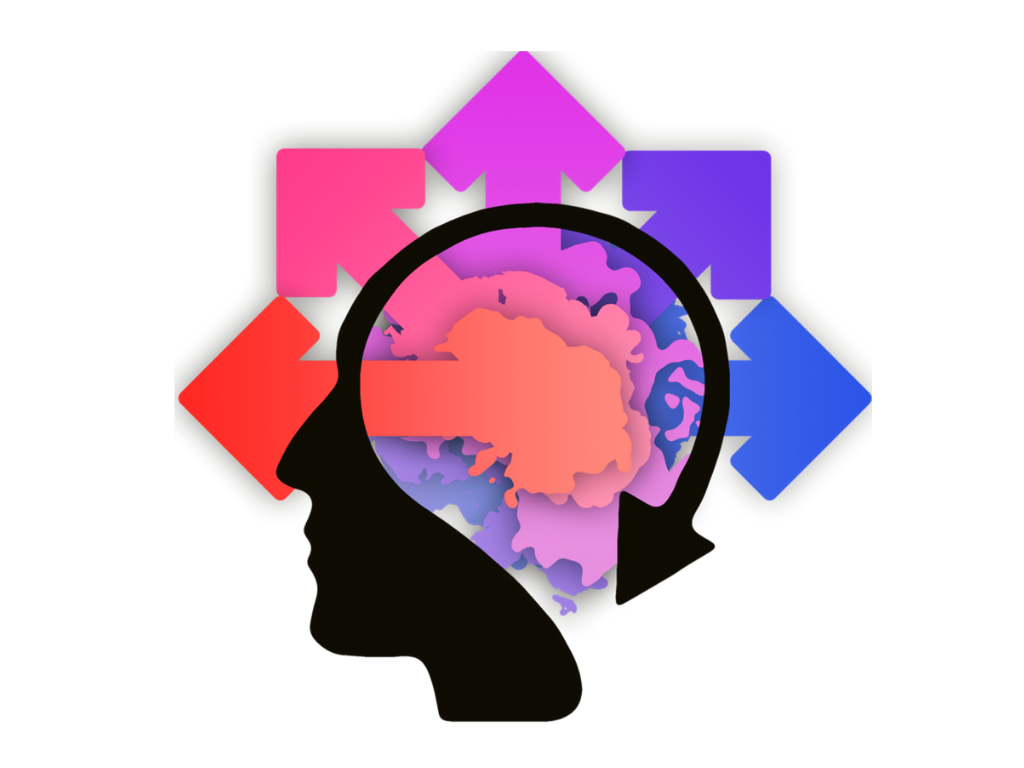
Another method We uses to ensure the student can find their voice and express themselves is through the Language Diamond.
This framework differs from the traditional language school method. This one usually focuses on speaking, listening, reading, and writing. This 'four skill' approach can be quite boring for the learner as it tends to focus on structure and grammar. As discussed above, it is necessary to understand a new language structurally to speak it. However, if this is the main focus of a learning journey, it can become a little dull.
Therefore the Language Diamond comprises these four skills alongside text and sound. This is essential to grasp a new language, especially when many alphabets and characters are involved.
Next up, in the center of the diamond, we can find the learner's values, opinions, sentiments, and facts. These are indistinguishable from any learning process, as our thoughts and feelings frame everything we do. They affect the reason we begin to learn a language, how we perceive the information we are taught, and how we continue to use that knowledge in our lives.
The final element of the diamond is 'Context.' Similar to the above, context is probably the most important part of this framework. By fully understanding the context of the learner, We is more able to accommodate them and ensure they achieve their goals.
J-CLUE & Cultural Understanding
Another interesting method to aid language learning is the J-CLUE approach. This stands for JAPANese Culture and Language Understanding Evaluation.
With an online resource, learners can check their cultural knowledge by taking some interesting tests based on Japan. Questions cover a range of topics: geography, history, everyday life, society, culture, and politics. Each quiz includes 20 questions. This allows you to continue your learning outside your lessons in a fun and accessible way.
You can check your knowledge of Japanese culture through a wide range of questions about Japan.
Another peculiarity of the We method is the integration of cultural learning. There is an emphasis on personalized learning and gaining awareness. By considering the culture behind the language we learn, the student is more able to express themselves within it. As we have discussed in a previous article, learning a new language very much affects how you perceive and interact with the world.
We Languages: What Works For You
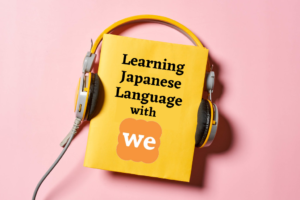
The WWW approach aims to lead students in their language learning journey effectively and enjoyably. It is your space to explore, expand and evolve within We and in your own life.
Author: Alison, WE's English coach and feature writer


